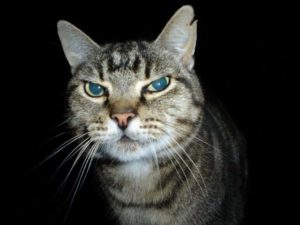Feral cat control
Feral cats can cause a significant impact on small native animals, birds, lizards and insects. They also can be responsible for passing on diseases such as toxoplasmosis. This disease can impact both native animals and livestock such as sheep. Toxoplasmosis can reduce fertility in sheep, causing reduced lambing rates. The main methods of feral cat control include poisoning, trapping, shooting and fencing. Shooting as a method of pest control is undertaken by a wide range of people. Shooting can be conducted by government vertebrate pest control officers, landholders and licensed shooters. Shooting is humane and very target specific. It is a tool that can be used to control feral cats. Shooting can work in collaboration with other pest control techniques to reduce the impacts and populations of feral cats across larger areas. Shooting can be conducted during the day and night. There are various techniques of shooting that can be implemented, including the use of spotlights, night or thermal vision, decoy callers and organised flushes. All these techniques can be employed to increase the efficiency of feral cat control activities. Shooting can be an expensive option if landholders need to employ a full-time, part-time or contract professional shooter/s. Shooting by accredited volunteer shooters is one of the cheapest pest control techniques available. Landholders can use money saved by utilising volunteer shooters to fund other complementary pest management tools.Act now!
The SSAA Farmer Assist program enables landholders to find licensed, accredited and insured volunteer shooters to assist with feral cat control. We have thousands of qualified members across the country ready to help landholders and managers with feral cat control. It only takes a few minutes to register for the SSAA Farmer Assist program so you can find friendly and willing volunteers to assist you with your feral cat problem.
